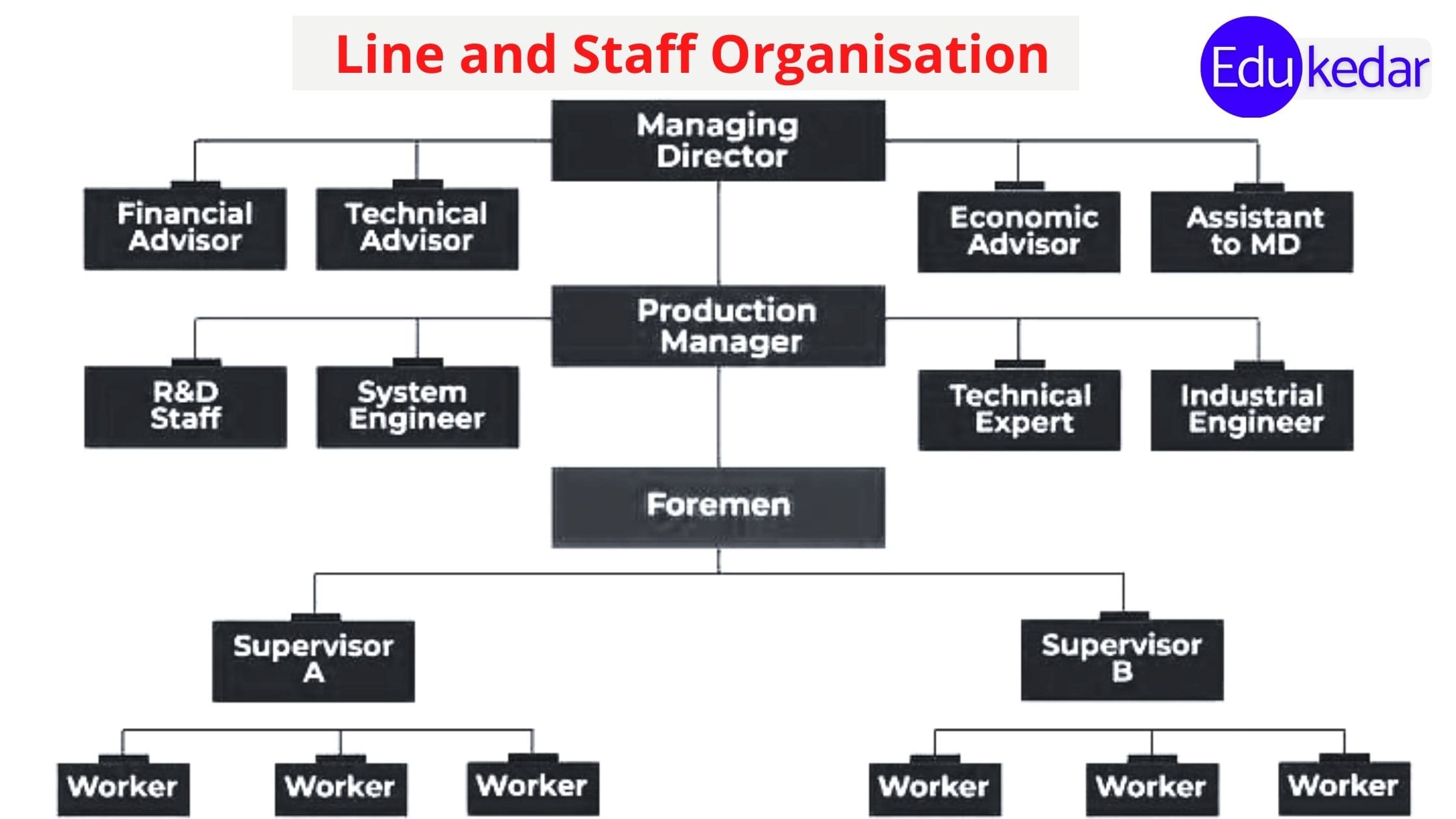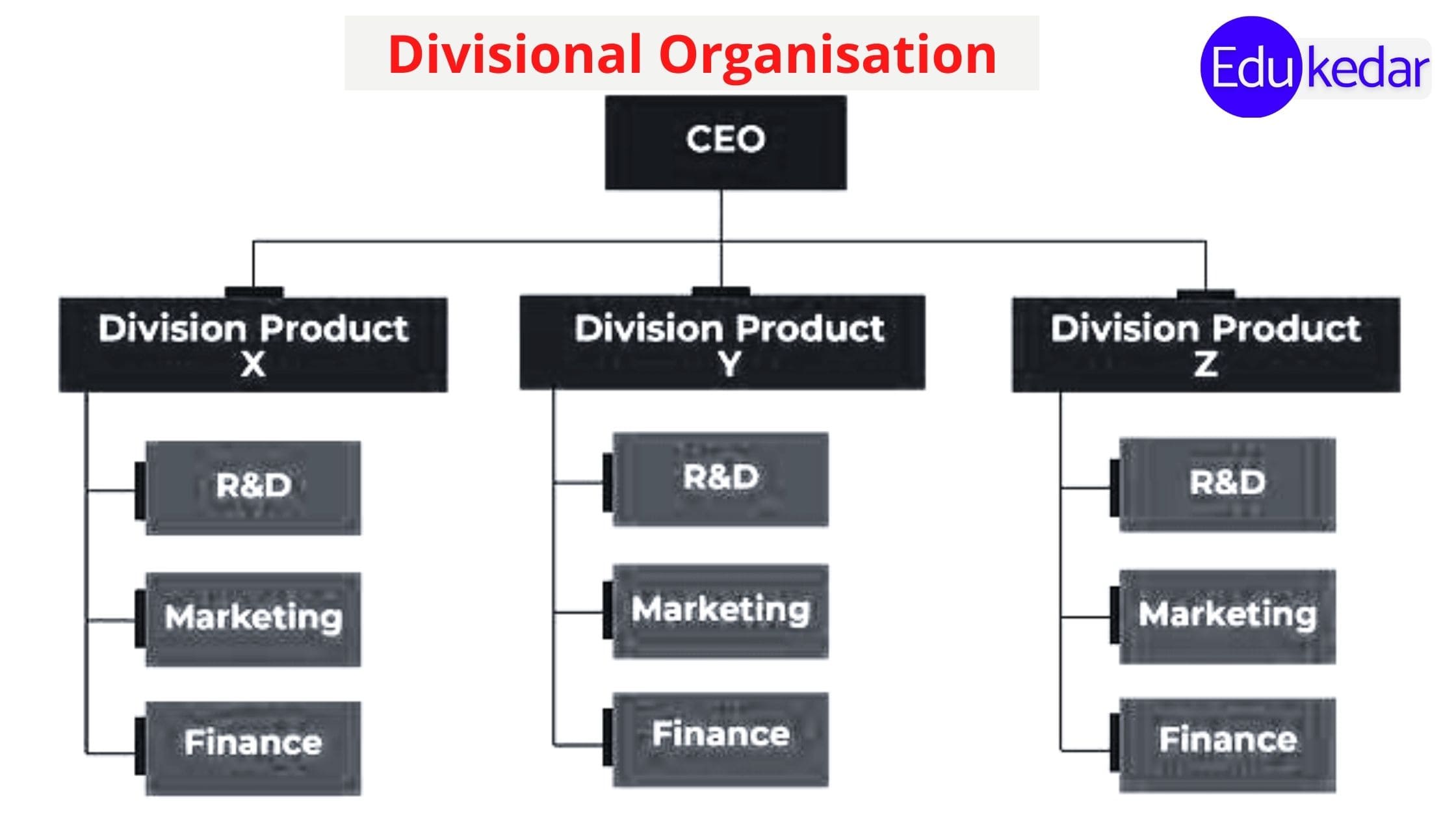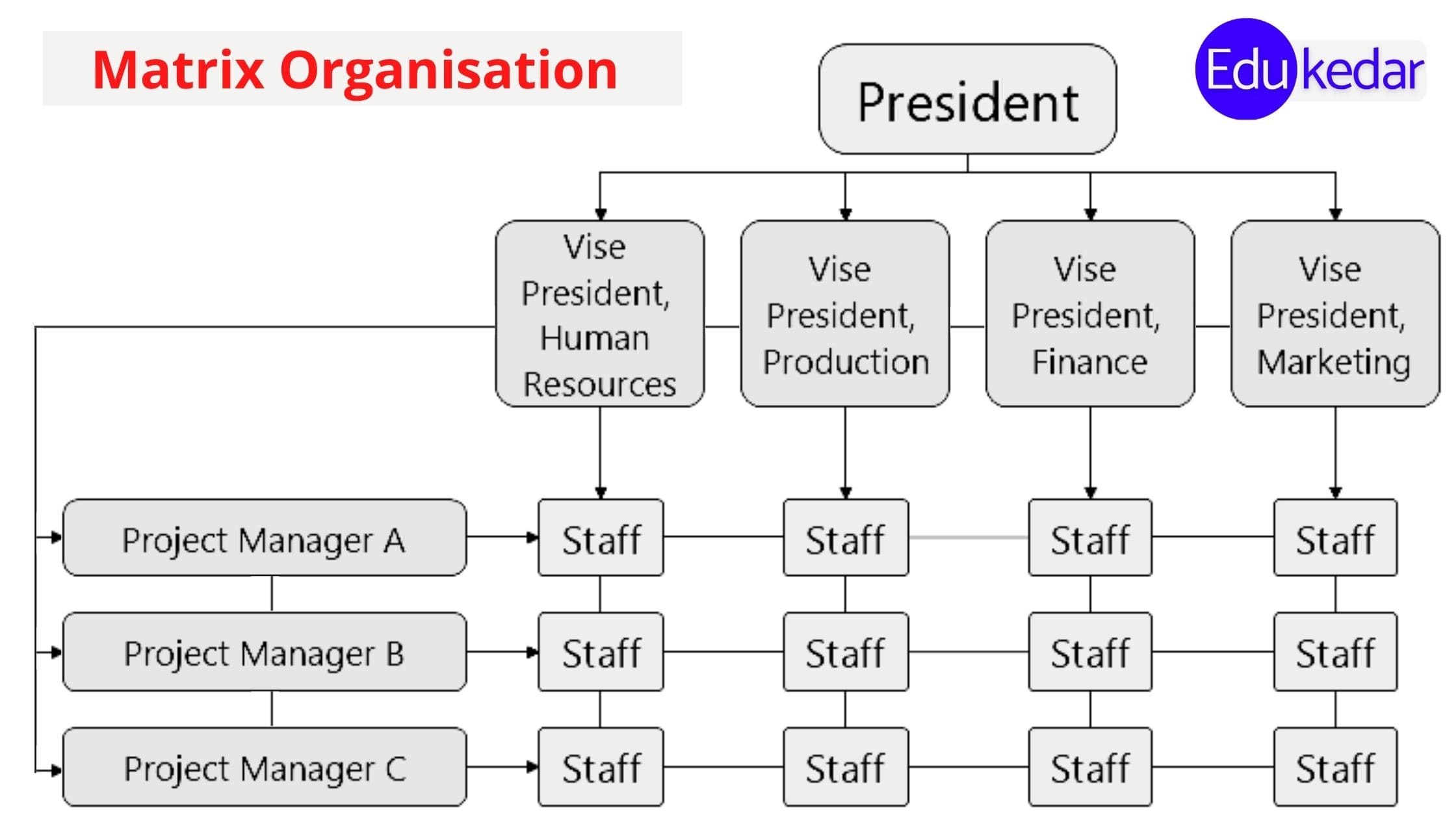Project Organization is a project-focused organizational structure where the project manager has the final authority over the project to make the project decisions priorities and to acquire and assign resources.
Here we will discuss what is project organization? and its meaning, definition, feature, types, lines, staff, divisional, and matrix of project org.
► What is Project Organization?
- A Project Organization refers specifically to an organizational structure that has been set up in a manner in which the project manager has the ultimate authority to make all decisions involving the org.
- Organization-wide projects tend to have cross-functional teams, spanning different functional specialisms. The team in marketing projects is often drawn mainly from the marketing department, and may also include marketing services organizations, often in addition to other work responsibilities.
◉ Project Organization Meaning
- A Project Organization defines the relationship between resources, in participants, in a project. The project organization is related to the scale of the task and the potential budget available.
- Project organization involves creating an independent organization specifically for accomplishing a particular goal.
◉ Definition of Project Organization
- Defining the project organization is a key part of the initial project planning. The structure and composition of the project team organization need to define at this stage in the project.
- A project organization can be specific to an organization that has been set up in a manner in which the project manager leads the group and in which the project manager has the ultimate authority to make any and all decisions involving the organization.
- Project organization is a project-focused organization structure where the project manager has the final authority over the project to make project decisions and priorities and to acquire, and assign resources.
► Forms of Project Organization (Types)
Here are the different forms or types of project organizations:
- Line and Staff Organization
- Divisional Organization
- Matrix Organization
✔ 1. Line and Staff Organization
In line and staff organization, the line and staff authority remains the same as it does in the line organization. Authority flows from top to bottom.

The main difference is that specialists which attached to line managers to advise them on important matters.
- The combination of line organization with this expert staff constitutes the different types of an organization known as line and staff organization.
- The ‘line’ will maintain discipline and stability; the ‘staff’ will provide expert information.
◉ Types of Staff
- The staff position establishes a measure of support for the line managers may take the following forms:
- Personal Staff
- Specialized Staff
- General Staff
Let’s know more about the types of staff in the organization.
- Personal Staff: In the staff, the official is attached as a personal assistant or adviser to the line manager. For example, Assistant to the managing director.
- Specialized Staff: In the staff acts as the fountainhead of expertise in specialized areas like R&D, personnel, accounting, etc. For example, R&D Staff.
- General Staff: This category of staff consists of a set of experts in different areas who are meant to advise and assist the top management on matters called for expertise. For example, Financial advisors, technical advisors, etc.
◉ Features of Line and Staff Organization
- In this system, there are line officers who have authority and command over the subordinates and are accountable for the tasks entrusted to them.
- The staff officers are specialists who offer expert advice to the line officers to perform their tasks efficiently.
- Under this system, the staff officers prepare the plans and give advice to the line officers and the line officers execute the plan with the help of workers.
- This is a weak form of organization that may be employed mostly for small projects only
- The line and staff organization is based on the principle of specialization.
◉ Advantages of Line and Staff Organization
- Expert advice from specialist staff.
- Specialization is attained.
- Facilitates to work in a faster and better mode.
- It helps in enabling utilizing experience and advice.
- Very good opportunities are made available to young people to get training.
- They devote more attention to production.
- Less wastage of material, man-hours.
- Quality of product is improved.
- There is no confusion as exists in functional organization.
- They possess both advantages of line and functional organization.
- It provides greater chances of advancement to make the employees by making more jobs available.
◉ Disadvantages of Line and Staff Organization
- If power is not defined then get confusion.
- Line officers may reject advice.
- Staff officers are not responsible if favorable results are not being obtained.
- Differences between line and staff officers will defeat the very purpose of specialization.
- Line officers blame staff officers for unfavorable Line officers blame staff officers for unfavorable results.
- The staff may be inefficient due to a lack of authority to enforce their decision.
- The overhead cost increases because of the high salaries of staff personnel.
- As duties and responsibilities are not clearly defined, there is bound to be some confusion in the relationship between the line and staff personnel.
Must Read :What is Project Scheduling?
✔ 2. Divisional Organization
A separate project division is set up to implement the project. Headed by the PM, this division has its complement of personnel over whom the project manager has full line authority and has total formal control over the division.

- This form of organization implies the creation of a goal-oriented division of the company with its own functional department.
- This type of organization facilitates the process of planning and control, brings about the better integration of efforts, and strengthens the commitment of the project-related personnel to the objectives of the project.
◉ Advantages of Divisional Organization
- Separation of strategic and operating control.
- Allows local control of the local situation.
- Creates career development changes.
- Leads to a competitive climate internally.
- Allows easy adding of new products or regions.
- Allows strict controls and attention to products, customers, or regions.
- The quick response is the too important changes in the external environment.
- The minimal problem of sharing resources across functional departments.
- The development of general management talent is enhanced.
◉ Disadvantages of Divisional Organization
- Can be dysfunctional competition among divisions.
- Can be a sense of a “zero-sum” game that discourages divisions.
- Differences in the images & quality may occur across.
- Can focus on short-term performance.
- Duplication of functional activities.
- Requires an elaborate control system.
- Requires a skills management force.
- Competitions among the division can become so intense as to be dysfunctional.
- This can lead to limited sharing of ideas and resources.
- Some of the regions, products, or customers may receive special treatment.
✔ 3. Matrix Organization
The matrix structure is a hybrid organization form, containing characteristics of both project and functional structures.

Business / Product Manager – responsibilities associated with the management of an independent business.
Functional /Resource manager – responsibilities related to the management of resources needed to get the job done.
- Organizational structure is both vertical and horizontal.
- The vertical pattern is brought about by the typical line of authority flowing down from superior to subordinate.
- The horizontal authority flows through both the scalar principle.
◉ Advantages of Matrix Organization
- Specialized knowledge is available to all projects or products on an equal basis. Knowledge & experience can have to be transferred from one project to another.
- The utilization of manpower can be flexible because a reservoir of specialists is maintained in functional departments. These specialists can be deployed to various projects for optimum use of their services.
- Responsibility for the overall execution, management, and profit is with the project manager who acts as a chief executive.
- The projected people have a functional home when they are no longer needed on a given project.
- A better balance between time, cost, and performance can be obtained through the built-in checks, balances and the continuous negotiations carried on between the project and the functional organization.
◉ Disadvantages of Matrix Organization:
- If the organization has too many projects, the result may be a severe layering of matrixes. Uncontrolled growth of matrix structures often results in power struggles between managers.
- The major disadvantage relates to power struggles. Since the use of the matrix means the use of dual command, managers often end up in conflicts.
- Matrix entails wide use of group decision-making because group cooperation is required for success. The inevitability of group cooperation at times delays decision-making.
- Matrix structure may be expensive. The dual chain of command may cause mgmt. costs to double.





